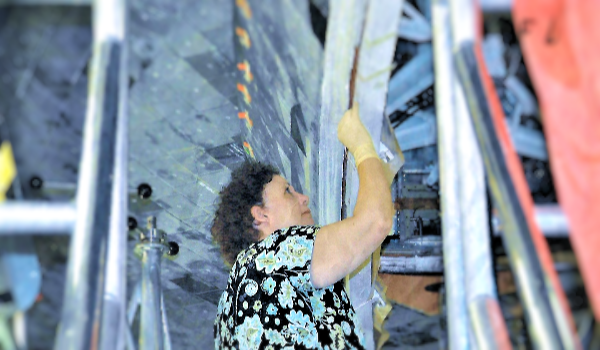
Sewing In Space

When we think of spaceships, we tend to think of hard, tough metal, wires, and electronics - certainly not textiles. And yet, according to Jean Wright, it turns out that NASA’s five space shuttles flew 135 times from 1981 to 2011 with enormous panels of hand-stitched work on their outsides, pieces essential to the shuttle’s survival. How does Jean know this? She was a member of the team doing the stitching.
The space shuttles had been flying for over two decades when Jean applied to work on them. She was a dressmaker at a store about an hour away from Florida’s Kennedy Space Center, where the shuttles launched and were refurbished between flights.

Jean had been sewing since she was seven years old, but this work was profoundly unlike anything she had ever done before. One of a team of 18 people, only one of whom was male, she became a member of the “Sew Sisters,” as others called them. Over 1400 specially-shaped quilted blankets covered most of the topside of the spacecraft. They ranged from half an inch to two inches in thickness – the thickest able to protect the shuttle up to temperatures of 1300 degrees Fahrenheit. A multi-needle sewing machine would quilt them in squares. They were made of quartz, with a spun quartz batting, attached to a fiberglass backing fabric. Both were bonded to the shuttle’s aluminum skin.

For six and a half years, Jean created special stitched elements of the space shuttle, until in 2011 the program came to an end. Her involvement with the space program did not end there, however. She continues to work at the Kennedy Space Center, now at a table next to the retired space shuttle Atlantis, using examples of her work to explain to the thousands of daily visitors why stitching was so vital to the space program.
Guest post by Francis French, images courtesy of Jean Wright.

1 comment
This is so wonderful to read. Thank you.